A new development at the Great Park has been approved, and the developers are promising to break up the monotony of Irvine.


Irvine Home Address … 8 BATON ROUGE #19 Irvine, CA 92604
Resale Home Price …… $444,500

I'm working out most everyday
and watching what I eat
They tell me that it's good for me,
but I don't even care
I know that it's crazy
I know that it's nowhere
But there is no denying that
It's hip to be a square
it’s hip to be a square
It’s hip to be a square
So hip to be a square
Huey Lewis and the News — Hip To Be Square
Irvine is cool. Yes, I know it is hip to criticize the banality of the place, but I like the stuffy formality and the lack of spontaneity because it is uniformly beautiful. Spontaneous ugliness does nothing for me. Traffic snarls and a lack of parking is not something I cherish. I know that it's crazy, but in Irvine, it really is hip to be square.
Non-beige homes approved in Irvine

September 28, 2011 — By JEFF OVERLEY
IRVINE – As desirable as Irvine is, it's safe to say the master-planned community isn't exactly known for avant-garde architecture, something that became clear earlier this year in reader responses to stories about the launching of a city motto contest.
“Irvine: We Have 62 Different Words for Beige,” one commenter suggested.
“Where Bland is in Demand,” another offered.
“Sixteen Zip Codes, Six Floor Plans,” a third said.
“Sorry, I Thought This Was My House,” yet another reader replied.
You get the idea.
Okay IHBers, this is your chance. Let me here your suggestions for an Irvine motto in the astute observations. Here are a few of mine:
“Tract homes from the $1,000,000s.”
“Where sameness carries a premium.”
“Honey, I shrunk the lot.”
“Even the parking lots are green.”
“Enjoy cachet when you overpay.”

But 40 years into its love affair with earth tones and stucco, Irvine is about to witness a significant splash of color and mixed media.
Nearly 5,000 homes, as well as shops and offices, were approved this month for areas surrounding the Great Park, and developer FivePoint Communities is not proposing much in the way of the Mediterranean traditions that have turned Irvine into a Little Italy of sorts.

Instead, FivePoint is embracing Craftsman, Folk Victorian, Traditional Monterey, American Classic and Cottage styles in its residences, the first phase of which should hit the market in 2013.
Eric Tolles, the city's community development director, suggested Irvine's reputation for homogeneity is a stereotype, but did say FivePoint's architecture “is a departure from what we've seen in recent years.”
In fact, the company is specifically promising diversity of design, something that's especially evident in its “Main Street” commercial area. There, it plans to include contemporary and classic looks, as well as “transitional” combinations of the two, on the same blocks.
“Many town centers have one dominant architectural style, compromising the authenticity of the place,” FivePoint says in plans that were submitted to the city and vow to “avoid monotony.”

This is a smart move on their part. They need to differentiate themselves from the Irvine Company to attract buyers. The last thing they want to do is be forced to compete by simply lowering their prices (we might want that, but they won't).
“Uninterrupted blank wall surfaces should be avoided along all building facades,” the plans say, and design should discourage features that “hinder pedestrian activity, such as big box retail.”
No dominant architectural style? No big box retailers? In Irvine?
It's hard to believe, and it's also a departure from a philosophy that's proven popular. The Irvine Co., which has developed the majority of the land in the city, has witnessed seemingly endless success with its products, including those in the new Woodbury communities, which from a distance resemble light-brown boxes.
Woodbury is not nearly as uniform as Westpark. If you compare the overhead below to the one of Westpark, you will see two or three more shades of brown.

Irvine Co. officials (who declined to comment) have an approach that has “been appealing to homebuyers,” Tolles noted.
The fact is, Irvine is appealing to buyers. I live in Woodbury, and I think it's beautiful. There is a place for everything, and everything is in its place. I think Woodbury is one of the finest master-planned communities I have seen, and land planning used to be my profession.
Yes, it is the same, but it is uniformly beautiful. Diversity which involves incorporating unattractive or inconvenient elements is not a plus. Laguna Beach is a beautiful eclectic mix of styles, but it has ugly buildings, inconvenient parking and circulation problems, and a host of other issues stemming from the fact it wasn't planned.
To each his own, but I will take the bland uniformity of Irvine any day.
Regardless of whether one appreciates that approach, it probably pales in importance compared with Irvine's nationally renowned schools and safety.
FivePoint will test the relevance of visual appearances with its diverse residential styles, which will variously employ stone veneers, asphalt shingles, wood shutters, lap siding, decorative columns, brick facades, wraparound porches and, notably, colors that don't resemble sand.
Renderings submitted to the city depict a wide variety of housing types, but FivePoint officials would release only one image of the homes, saying the others remain conceptual.

In its plans, the company seems to deride cookie-cutter construction, referring at one point to the 19th century Arts and Crafts movement that “rejected mass production and mediocre design in favor of the beauty and honesty of traditional hand-craftsmanship and natural materials.”
Carol Wold, a FivePoint vice president, said “there will be a variety of housing types to create distinctive neighborhoods.”
Which, given the surroundings, shouldn't be too hard to do.
Related: 40 things that define Irvine
Related: 10 things you might not know about Irvine
Contact the writer: 714-796-7952 or joverley@ocregister.com
Some of those jabs at Irvine are pretty funny.
Realistically, Irvine is the city that benefits from its surroundings. Most of Orange County is poorly planned. The traffic systems don't work well, the commercial centers are ugly, the streets are too narrow and lack sufficient landscaping. In short, Irvine looks good because most of its neighbors are ugly. Kudos to the Irvine Company for recognizing the opportunity to create value through good planning.
Option ARM Ponzi
Most people who refinanced with Option ARMs during the height of the housing bubble went Ponzi and imploded. The previous owner of today's featured property paid $445,000 on 12/10/2003 and put nothing down. When offered free money shortly thereafter, he took it. He refinanced on 12/19/2005 with a $492,000 Option ARM, and followed that up with two more HELOC withdrawals.
In short, the previous owner put nothing in to the property and got to take more than $100,000 out. It makes me feel pretty stupid for renting while this was going on.
——————————————————————————————————————————————-
This property is available for sale via the MLS.
Please contact Shevy Akason, #01836707
949.769.1599
sales@idealhomebrokers.com


Irvine House Address … 8 BATON ROUGE #19 Irvine, CA 92604
Resale House Price …… $444,500

Beds: 3
Baths: 2
Sq. Ft.: 1639
$271/SF
Property Type: Residential, Condominium
Style: Two Level, Contemporary
Year Built: 1977
Community: El Camino Real
County: Orange
MLS#: S674957
Source: SoCalMLS
Status: Active
On Redfin: 3 days
——————————————————————————
This home is a real beauty. Light and bright with 3 large bedrooms and 2.5 baths. Close by churches and ample shopping. Many more photos to come!
——————————————————————————————————————————————-
Proprietary IHB commentary and analysis ![]()
Resale Home Price …… $444,500
House Purchase Price … $445,000
House Purchase Date …. 12/10/2003
Net Gain (Loss) ………. ($27,170)
Percent Change ………. -6.1%
Annual Appreciation … 0.0%
Cost of Home Ownership
————————————————-
$444,500 ………. Asking Price
$15,558 ………. 3.5% Down FHA Financing
4.00% …………… Mortgage Interest Rate
$428,942 ………. 30-Year Mortgage
$124,218 ………. Income Requirement
$2,048 ………. Monthly Mortgage Payment
$385 ………. Property Tax (@1.04%)
$0 ………. Special Taxes and Levies (Mello Roos)
$93 ………. Homeowners Insurance (@ 0.25%)
$493 ………. Private Mortgage Insurance
$190 ………. Homeowners Association Fees
============================================
$3,209 ………. Monthly Cash Outlays
-$318 ………. Tax Savings (% of Interest and Property Tax)
-$618 ………. Equity Hidden in Payment (Amortization)
$22 ………. Lost Income to Down Payment (net of taxes)
$76 ………. Maintenance and Replacement Reserves
============================================
$2,370 ………. Monthly Cost of Ownership
Cash Acquisition Demands
——————————————————————————
$4,445 ………. Furnishing and Move In @1%
$4,445 ………. Closing Costs @1%
$4,289 ………… Interest Points @1% of Loan
$15,558 ………. Down Payment
============================================
$28,737 ………. Total Cash Costs
$36,300 ………… Emergency Cash Reserves
============================================
$65,037 ………. Total Savings Needed
——————————————————————————————————————————————————-




 It's entirely possible the 4% interest rates currently available will cause prices to bottom this fall and winter, but I rather doubt it. What is also possible is that payment affordability may bottom this fall and winter. That scenario is far more likely than seeing an absolute bottom in prices. A $400,000 property purchased at a 4% interest rate is less expensive to own than a $350,000 property purchased with a 6% interest rate.
It's entirely possible the 4% interest rates currently available will cause prices to bottom this fall and winter, but I rather doubt it. What is also possible is that payment affordability may bottom this fall and winter. That scenario is far more likely than seeing an absolute bottom in prices. A $400,000 property purchased at a 4% interest rate is less expensive to own than a $350,000 property purchased with a 6% interest rate.







 IHB: He is correct. If we implement some of these foolish ideas, would would inflate a mini-bubble which would extend the pain of the housing market another decade but create some short-term benefit to the real estate industry.
IHB: He is correct. If we implement some of these foolish ideas, would would inflate a mini-bubble which would extend the pain of the housing market another decade but create some short-term benefit to the real estate industry.


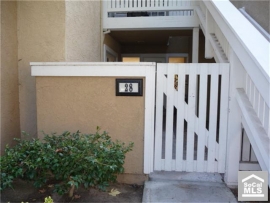
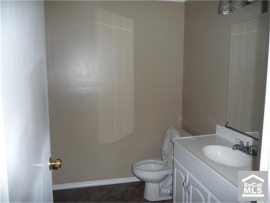
.png)


 A group whose original payment motivations has been lost? LOL! That is the best euphemism I have read in ages. The group they are talking about was motivated to pay as long as prices were going up and they were given more Ponzi debt to make their payments. Once the HELOC money was not forthcoming, they lost their motivation. ~~ giggles to self ~~
A group whose original payment motivations has been lost? LOL! That is the best euphemism I have read in ages. The group they are talking about was motivated to pay as long as prices were going up and they were given more Ponzi debt to make their payments. Once the HELOC money was not forthcoming, they lost their motivation. ~~ giggles to self ~~.png)





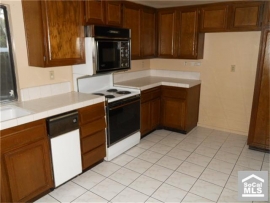







.jpg)
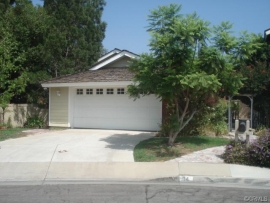
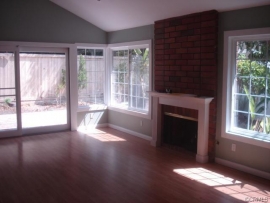


 Housing woes are still the primary cause of our weak economy. An entire industry is sitting on the sidelines.
Housing woes are still the primary cause of our weak economy. An entire industry is sitting on the sidelines. 


 The housing bust in California has enabled many renters to buy properties closer in to employment centers. The commute through the valley on the 91 is no longer a necessary price to pay to have a nice house for many who work in Orange County.
The housing bust in California has enabled many renters to buy properties closer in to employment centers. The commute through the valley on the 91 is no longer a necessary price to pay to have a nice house for many who work in Orange County.



